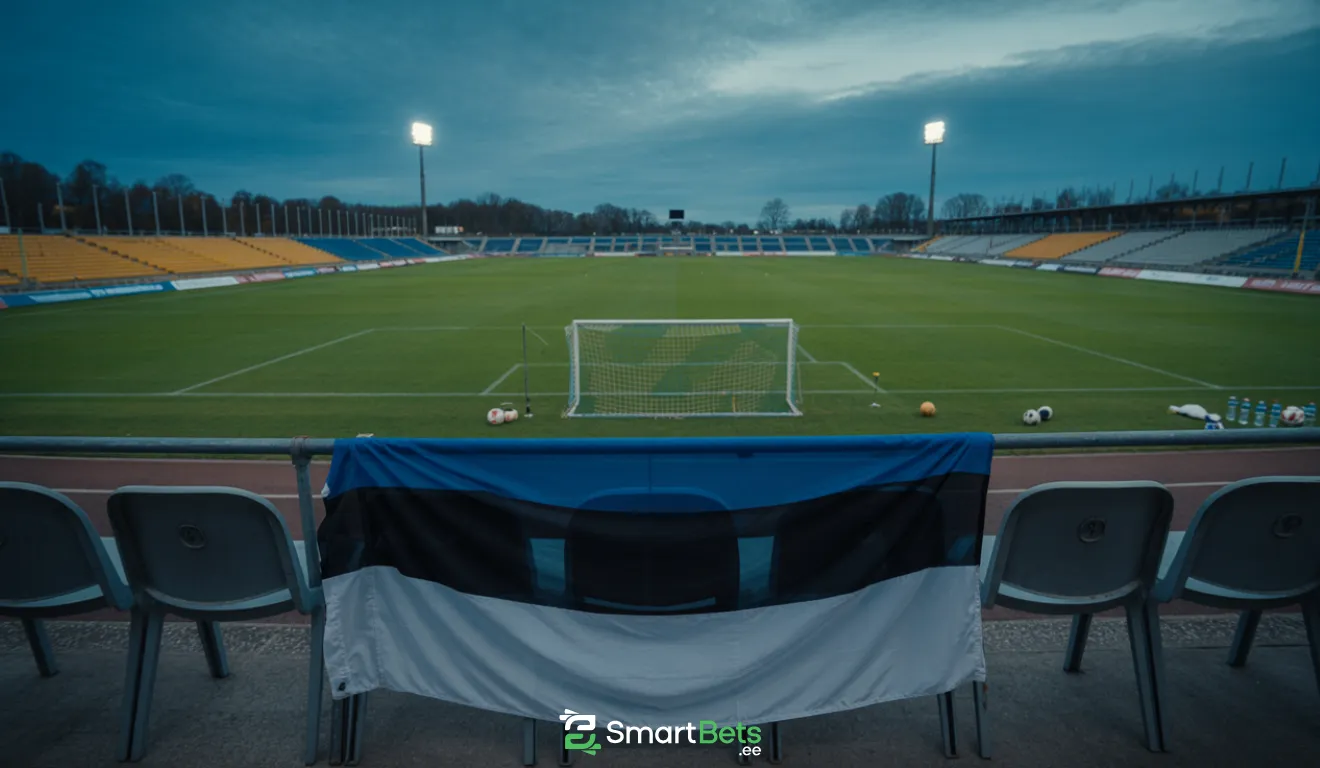Estonia Close Out 2026 World Cup Qualifiers With 4–1 Defeat to Norway: What Really Happened in Oslo


Estonia’s 2026 FIFA World Cup qualifying campaign officially came to an end on Thursday night with a 4–1 loss away to Norway at Ullevaal Stadium in Oslo. The match did not affect Estonia’s position in Group I — the team had already been eliminated following last month’s results against Italy and Moldova — but it still served as an important test of depth, mentality, and future potential. Norway, on the other hand, stepped onto the field with enormous pressure. Sitting atop Group I with only a three-point cushion over Italy, Ståle Solbakken’s team desperately needed a victory to keep full control of their World Cup destiny heading into Sunday’s decisive showdown in Milan. Below is a complete breakdown of the match, individual performances, tactical decisions, and what Estonia’s final qualifier tells us about the future of the national team.
A First Half Built on Discipline and Pure Defensive Commitment
Estonia missing key players again
Estonia entered the match without defender Maksim Paskotši (KAA Gent) and midfielder Mattias Käit (FC Thun) — two of the squad’s most influential players in transitions and defensive stability. With both absent, head coach Thomas Häberli was forced to reorganize his structure and rely heavily on a young, inexperienced defensive core.
Norway start aggressively
Norway, playing in front of a nearly full home crowd, dominated the early stages with long spells of possession, quick wing play, and an aggressive high press. Although Manchester City star Erling Haaland did not start the match, the Norwegians still possessed enough firepower to threaten constantly. They produced 13 shots in the first half alone, but Estonia held firm. The back four stayed compact, the midfield dropped deep to block passing lanes, and goalkeeper operations were solid. Norway controlled nearly everything except the scoreline.
A zero–zero that felt like a tactical victory
Despite limited attacking opportunities — Estonia produced only two first-half attempts — keeping Norway scoreless for the first 45 minutes was a minor triumph considering the context. It showcased discipline, structure, and the ability to absorb pressure. For a squad lacking two core players, this was one of the most defensively mature halves Estonia played in the entire qualifying campaign.
Second Half: The Match Turns Quickly — Sørloth, Haaland, and a Norwegian Storm
Norway’s breakthrough arrives
The first five minutes after the restart looked balanced, but the match instantly changed in the 53rd minute when Alexander Sørloth (Atlético Madrid) headed home a perfect cross from Sander Berge (Fulham). The goal came from one of Norway’s favourite patterns: wide overloads followed by a fast arrival into the box. Two minutes later, Sørloth struck again. Estonia were suddenly 2–0 down, and their disciplined first half evaporated within moments.
Haaland enters, Estonia suffer
Then came the inevitable: Erling Haaland, introduced with the clear intention of finishing the job, scored two goals in just a few minutes — including a powerful header that re-established his reputation as one of the world’s most dominant aerial forwards. With the scoreline at 4–0 by the 60th minute, Norway effectively secured their three points and extended the pressure on Italy ahead of their Sunday clash.
Estonia Fight Back: Saarma Scores His First National Team Goal
A moment of pride
Despite the scoreline, Estonia refused to collapse entirely. In the 65th minute, a superb long ball from Kevor Palumets (Podbrezová) split Norway’s lines and found Robi Saarma (Pardubice), who calmly placed the ball into the bottom corner. This was not only Estonia’s consolation goal — it was Saarma’s first-ever goal for the national team, an important personal milestone for the 24-year-old winger.
Almost a second: the future reveals itself
Late in the match, 17-year-old attacker Marten-Chris Paalberg produced one of the most spectacular moments of the night. His long-range strike beat the Norwegian goalkeeper but smashed off the crossbar. Had it gone in, it would have been one of the most memorable debut goals in recent Estonian football history. His confidence, technique, and willingness to shoot showed exactly why he is considered one of the brightest young prospects in the Estonian system.
Group I: Final Picture and Qualification Scenarios
Estonia closed their World Cup qualifying campaign with: 1 win — the dramatic 3–2 victory away to Moldova; 1 draw — 1–1 at home vs Moldova; 6 defeats. Despite finishing above Moldova, the Moldovans still retain a theoretical playoff path thanks to the UEFA Nations League ranking system. Estonia, however, are officially out. Israel, who finished one place above Estonia, are also eliminated. In the group’s other Thursday match, Italy defeated Moldova 2–0, meaning that: Italy vs Norway on Sunday in Milan will directly decide who qualifies automatically; the loser will still have a chance through the playoffs. The final draw for the 2026 FIFA World Cup will take place on December 5, with Europe on high alert as the expanded 48–team format creates new dynamics and new opportunities.
What This Campaign Tells Us About Estonia Going Forward
-
Defensive structure improved — For long stretches — including the entire first half against Norway — Estonia showed increased defensive maturity. 2. Squad depth remains a challenge — Missing Paskotši and Käit significantly affected Estonia’s fluidity and composposure. 3. Young talent is emerging — Paalberg’s near-goal and Saarma’s confidence signal a positive future for Estonia’s attacking potential. 4. Results did not reflect the overall progress — Estonia’s performances were often better than the raw numbers suggest. The next Nations League cycle will be a crucial test for development.
Conclusion: A Tough Night, but Not Without Hope
The 4–1 loss in Oslo officially ended Estonia’s attempt to reach the 2026 World Cup, but the match also produced milestones, promising individual performances, and clearer insight into what the national team must build toward. With a young core rising and several key players returning soon, Estonia will shift focus to international friendlies and the upcoming Nations League, where the next stage of development begins.



